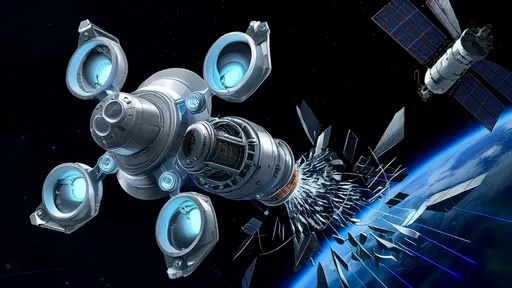For decades, humanity has been launching satellites, rockets, and spacecraft into orbit with little regard for the consequences. Now, the skies above us are cluttered with defunct satellites, spent rocket stages, and countless fragments of debris—all hurtling around Earth at speeds of up to 17,500 miles per hour. This growing cloud of space junk poses a serious threat to active satellites, the International Space Station, and even future space missions. Enter the laser broom: a high-tech solution that could help sweep our orbital pathways clean.
The concept of using lasers to remove space debris isn’t new, but recent advancements in laser technology have brought it closer to reality. Unlike traditional methods—such as nets, harpoons, or robotic arms—laser brooms offer a non-contact, scalable solution. By firing carefully calibrated laser pulses at debris, scientists can alter the objects’ trajectories, nudging them into lower orbits where they’ll eventually burn up in Earth’s atmosphere. It’s a delicate dance of physics and precision engineering, one that could redefine how we manage the crowded space environment.
How Laser Brooms Work
The principle behind laser brooms is surprisingly straightforward, though the execution is anything but simple. Ground-based or space-based lasers target debris, delivering short bursts of energy. These pulses don’t vaporize the debris outright—instead, they create tiny plasma jets on the object’s surface. The force generated by these jets acts like a miniature thruster, gently pushing the debris into a new orbit. Over time, repeated nudges can lower the debris’s altitude enough for atmospheric drag to take over, pulling it down to a fiery demise.
One of the biggest challenges is tracking debris with enough accuracy to hit them with a laser. The U.S. Space Surveillance Network currently monitors over 27,000 pieces of orbital debris, but countless smaller fragments go untracked. Advanced radar systems and optical telescopes are being developed to improve tracking resolution, ensuring lasers can lock onto even the tiniest, fast-moving targets. Without this precision, the risk of inadvertently pushing debris into more dangerous orbits becomes a real concern.
The Ethical and Political Hurdles
While the technology shows promise, laser brooms aren’t without controversy. The same systems used to clear debris could, in theory, be weaponized to disable active satellites. This dual-use nature has sparked debates among policymakers and space agencies. Who gets to decide which objects are "junk" and which are functional? How do we prevent the misuse of orbital lasers under the guise of cleanup? International cooperation will be crucial, as no single nation can tackle space debris alone—yet agreeing on regulations has proven difficult.
Another concern is liability. If a laser maneuver accidentally causes debris to collide with a functioning satellite, who bears responsibility? Current space law, largely shaped by treaties from the Cold War era, is ill-equipped to handle such scenarios. Legal frameworks must evolve alongside the technology to ensure accountability and prevent conflicts.
The Road Ahead
Despite these challenges, several countries and private companies are pushing forward with laser broom prototypes. China has tested ground-based lasers for debris mitigation, while Japan and the European Space Agency are exploring hybrid systems that combine lasers with other removal methods. In the U.S., startups like Orbital Cleanup Inc. are developing compact, space-based laser systems designed to target the most hazardous debris.
The clock is ticking. With mega-constellations like SpaceX’s Starlink adding thousands more satellites to orbit, the risk of catastrophic collisions—and the resulting cascade of debris known as the Kessler Syndrome—grows ever higher. Laser brooms may not be a silver bullet, but they represent one of the most promising tools in our orbital cleanup arsenal. The question isn’t whether we’ll need them, but whether we can deploy them in time to prevent a crisis.
As we stand on the brink of a new era in space sustainability, the laser broom symbolizes both our ingenuity and our recklessness. It’s a reminder that the skies above us, once thought infinite, are just as vulnerable to pollution as the oceans and lands below. The next chapter of space exploration will depend not just on reaching new frontiers, but on cleaning up the mess we’ve already left behind.

By /Jul 2, 2025

By /Jul 2, 2025

By /Jul 2, 2025

By /Jul 2, 2025

By /Jul 2, 2025

By /Jul 2, 2025

By /Jul 2, 2025

By /Jul 2, 2025

By /Jul 2, 2025

By /Jul 2, 2025

By /Jul 2, 2025

By /Jul 2, 2025

By /Jul 2, 2025

By /Jul 2, 2025

By /Jul 2, 2025

By /Jul 2, 2025

By /Jul 2, 2025

By /Jul 2, 2025

By /Jul 2, 2025

By /Jul 2, 2025